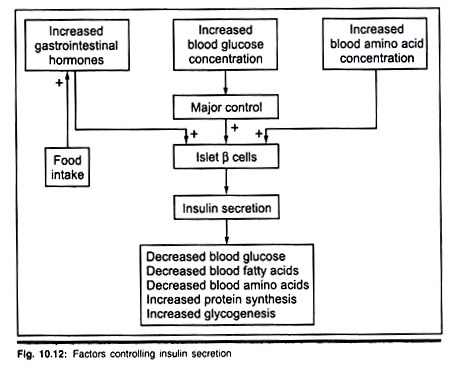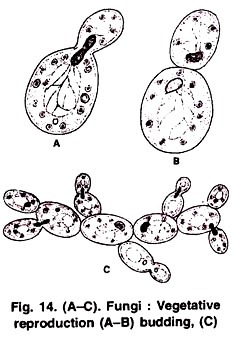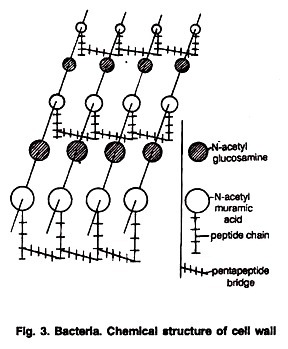ADVERTISEMENTS:
Here are your notes on the Theories of Cytokinesis!
Formation of a furrow in the dividing cell is accompanied by increased cytoplasmic viscosity.
1. Contractile ring theory (Cortical gel contraction theory):
According to Swann and Mitchison (1958), gelated ring in ectoplasm of dividing cell is considered to contract like non-motile portion of an Amoeba.
ADVERTISEMENTS:
Its contraction decreases the surface area of cell. In the modified form of contractile furrow theory, there occurs passive increase in surface at the poles due to active contraction of furrow region.
2. Expanding surface theory:
This view asserts that a nuclear substance is liberated (also from chromosomes) which is responsible for the cellular expansion at poles. As a result of expansion of polar area, equatorial region apparently contracts and a furrow appears leading to the division of cell into daughter cells.
But there are examples when cells without nuclei or chromosomes cleave as shown by Nachtwey (1965), indicating that exciting substance might have originated from other than nucleus.
3. Spindle elongation theory:
Dan and Dan (1947) and Dan (1958) say that spindle and asters are responsible for cell cleavage. During experiments, kaolin particles were attached with an egg membrane. It was observed that elongation of cell at anaphase is accompanied by shrinkage of equatorial plane and likewise two kaolin particles on either side of equator come close to the other. The driving force is believed to be the elongation of spindle tubules which pushes the centres apart.
4. Astral relaxation theory:
Wolpert (1960 1963) proposes that an egg surface appears to be under uniform tension before cleavage starts. During division, when asters reach the poles of egg, it is assumed that they produce a change resulting in lowering of surface tension at poles, but surface tension at equator is maintained. Due to this, equatorial region contracts, whereas Polar Regions expand. Energy requirements are fulfilled by ATP system.
5. Vesicles formation theory:
Threadgold (1968) suggests that, during anaphase, dividing cell lengthens especially in the inter-zonal region Causing increased electron density.
Also plasma membrane in the furrow exhibits high electron density. Simultaneously, continuous spindle fibre in inter-zonal region continue to increase its density and finally form an adi-electronic fibrillar plate in the equator. As furrow progresses, a large, empty membrane—lined vesicle appears on each side of this plate and later on small vesicles are added in the equatorial plane.
They (vesicles) seem to have arisen from ER. In the final stage, fusion occurs of all large and small vesicles to form a deep furrow, leaving the daughter cells to be connected by an intercellular bridge. Further, a row of tiny vesicles arises which causes final separation of two daughter cells.



